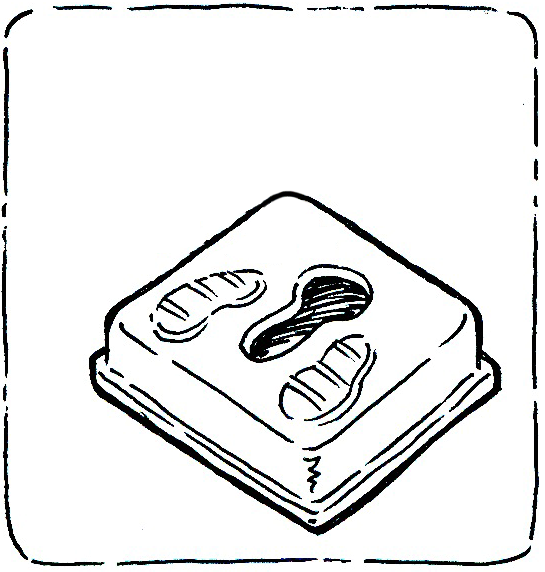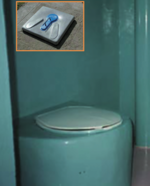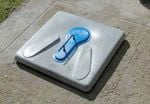|
|

A Dry Toilet is a toilet that operates without water. The Dry Toilet may be a raised pedestal that the user can sit on, or a squat pan that the user squats over. In both cases, excreta (both urine and faeces) fall through a drop hole.
Here, a Dry Toilet refers specifically to the device that the user sits or squats over. In other literature, a Dry Toilet may refer to a variety of technologies, or combinations of technologies (especially pits).


The Dry Toilet is usually placed over a pit; if two pits are used, the pedestal or slab should be designed in such a way that it can be lifted and moved from one pit to another.
The slab or pedestal base should be well sized to the pit so that it is both safe for the user and prevents stormwater from infiltrating the pit (which may cause it to overflow).
| Advantages | Disadvantages |
|---|---|
| - Does not require a constant source of water. - Can be built and repaired with locally available materials. |
- Odours are normally noticeable (even if the vault or pit used to collect excreta is equipped with a vent pipe). - The excreta pile is visible, except where a deep pit is used. |
Adequacy
Dry Toilets are easy for almost everyone to use. Because there is no need to separate urine and faeces, they are often the most physically comfortable and natural option.
Pedestals and squatting slabs can be made locally with concrete (providing that sand and cement are available). Wooden or metal molds can be used to produce several units quickly and efficiently. When dry toilets are made locally, they can be specially designed to meet the needs of the target users (e.g. smaller ones for children). Fibreglass, porcelain and stainless steel versions may also be available. They are appropriate for almost every climate.
Health Aspects / Acceptance
Squatting is a natural position for many people and so a well-kept squatting slab may be the most acceptable option.
Since Dry Toilets do not have a water seal, odours may be a problem depending on the Collection and Storage/ Treatment technology to which it is connected.
Maintenance
The sitting or standing surface should be kept clean and dry to prevent pathogen/disease transmission and to limit odours.
There are no mechanical parts and so the Dry Toilet should not need repairs except in the event that it cracks.
Manuals, videos, and links
- Dry toilet Demonstration of SanPlat system.
- http://www.sanplat.com/sharewar.htm Manual for building SanPlat-type dry toilets.
References
- Brandberg, B. (1997). Latrine Building. A Handbook for Implementation of the Sanplat System. Intermediate Technology Publications, London. pp 55–77 (Describes how to build a squatting slab and the moulds for the frame, footrests, spacers, etc.)
- Morgan, P. (2007). Toilets That Make Compost: Low-cost, sanitary toilets that produce valuable compost for crops in an African context. Stockholm Environment Institute, Sweden. (Excellent description of how to make support rings and squatting slabs (pages 7–35) and pedestals (39–43) using only sand, cement, plastic sheeting and wire.) Available: www.ecosanres.org
- Squatting plates www.sanplat.com
- Netherlands Water Partnership (NWP) (2006). Smart Sanitation Solutions. Examples of innovative, low-cost technologies for toilets, collection, transportation, treatment and use of sanitation products. NWP, Netherlands. (Provides country specific data and links for further information.)